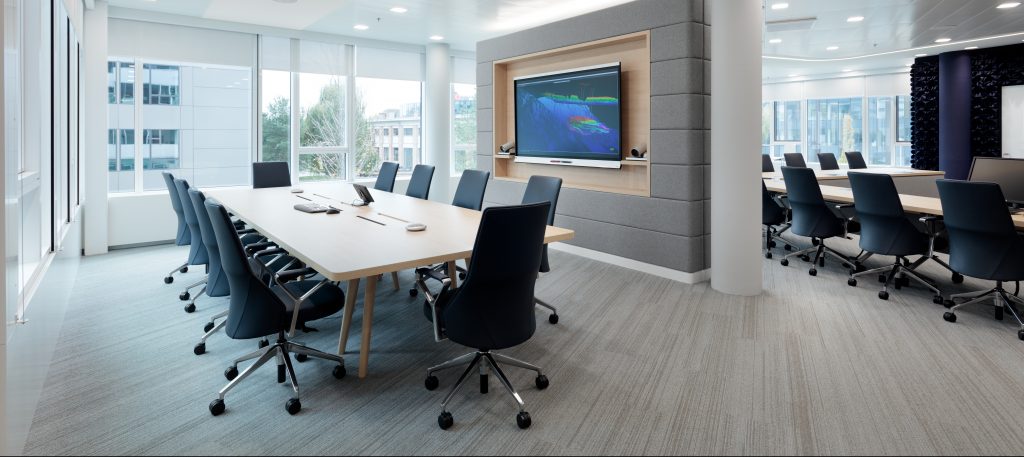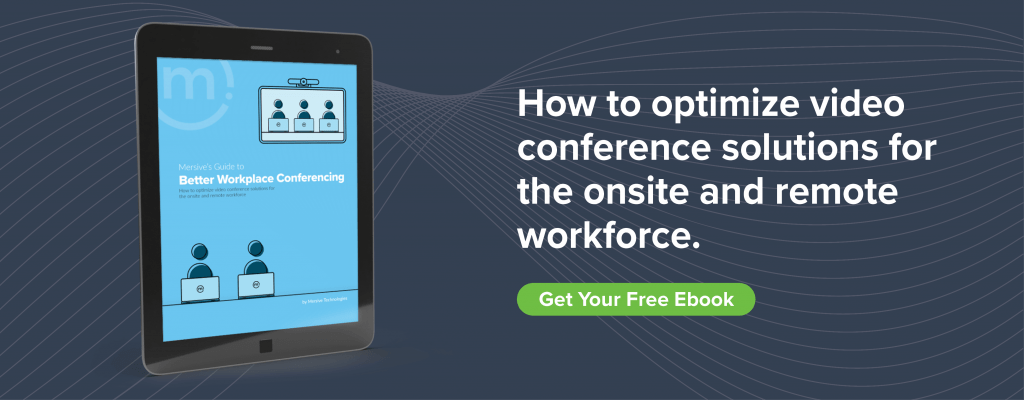Organizations have a lot riding on meetings, so CIOs must ensure that the technology that supports meetings truly does what it should: make it easier for people to come together, share ideas and content, and collaborate. But how are CIOs doing in that endeavor?
To be candid, they’re suffering from “meeting myopia.” They’ve over-indexed on solving the “remote employee” use case at the expense of understanding the “great meeting” use case that would allow them to recommend meeting technology that impacts a much larger population of employees, both local and remote.
Connecting remote participants to a meeting room only improves meeting productivity to a degree. The bigger impact CIOs could make is introducing meeting room technology that eliminates barriers to collaboration for both local and remote employees, a massive productivity problem for the vast majority of companies.
This post is part one of a four-part series exploring how CIOs can solve for unproductive meetings through technology that serves the needs of both in-room and remote participants.
The awful truth about awful meetings
Research from Doodle’s State of Meetings 2019 projects that U.S. businesses will have lost $399 billion and 24 billion hours by the end of 2019 to unproductive meetings. Unproductive meetings have a significant impact on morale, engagement, and retention, too, according to Harvard Business Review, which pulled no punches in its January-February 2019 issue with an article titled “Why Your Meetings Stink–and What to Do About It.” The article cites research that found that of the 23 hours executives spend in meetings each week, eight of those hours are unproductive. Further, 73 percent of respondents to a survey reported in the same article said that they do other work during meetings — and 90 percent of all respondents admitted that they regularly daydream during meetings. Unproductive meetings aren’t just inconvenient. They’re erosive day to day, because time is zero-sum, and they dampen innovation in the long term by robbing workgroups of chances to collaborate.
Without collaboration, innovation is unlikely.

Collaboration is more than a buzzword. It’s become a business and cultural imperative, and leading organizations are not only emphasizing its importance but also systemizing it into a sustainable process, as detailed in the Harvard Business Review article “Cracking the Code of Sustained Collaboration” (November-December 2019). In turn, the pursuit of collaboration has driven a demand for greater numbers of small-group collaborative spaces, such as huddle areas, rather than conference rooms. The collaboration imperative is driven significantly by the impact of millennials, who are rapidly becoming the leading demographic in the workforce and who value collaboration as a core competency. Their demand for collaboration-driven workspaces has resulted in major changes in not only how people meet but also in what type of space they meet in, as seen in the growing prevalence of huddle spaces and other small-group meeting spaces.
The mass mistreatment of meeting rooms
Although meetings and the spaces that they exist in should be deliberately designed for collaboration, they often are not. CIOs and others responsible for outfitting meeting spaces with appropriate technologies are unintentionally limiting productivity and collaboration in these spaces by making obvious spending decisions with mediocre returns rather than making insightful ones with great returns. In doing so, they miss a significant opportunity to maximize the ROI of meeting room real estate, AV equipment, and information technology.
One of the key culprits in this inefficiency is the misuse of video conferencing room systems. While it is terrific at connecting remote and in-room, or proximate, participants through the use of video and audio, video conferencing is simply an inferior tool for proximate content sharing and collaboration.

Tech that doesn’t fit is tech that makes you work harder. Video conferencing room systems are inherently presentation-style technologies that don’t complement our natural collaborative habits and tendencies. They force us to adapt our human-centered workflows to the limitations of the very technology that should be assisting us. Meetings should make cooperative work easier, but if we don’t use technologies that are purpose-built for collaboration, we’re making too great a compromise in both outcome and method.
With presentation-style technologies, only one person at a time can share content. Even in the best of circumstances, this creates numerous artificial pauses and delays in workflow and ideation between presenters. Add in the delays — not to mention the frustration — caused by clunky UI and dealing with hardware, too.
This disrupts the way we naturally collaborate, which causes unproductive meetings and employee disengagement.
According to Futuresource Consulting Ltd, the video conferencing room system market grew a robust 28 percent in 2018 and is expected to see similar growth over the next few years. While video conferencing is vital for connecting remote attendees, provisioning video conferencing end-points in every room doesn’t make sense, considering that the primary users of meeting rooms are in-room attendees. As such, the proliferation of video conferencing solutions serves only a minority of meeting participants.
CIOs: Time to normalize the spending inequity
Fact: CIOs spend more on presentation-style video conferencing solutions than collaborative in-room wireless collaboration solutions — at a rate of approximately two to one. Data from Futuresource Consulting Ltd. reveals that in 2018, approximately $5.2 billion (USD) was spent on video conferencing solutions; however, around $2.6 billion was spent on in-room collaboration platforms. This disproportionality hamstrings effective use of meeting space and limits the effectiveness of meetings.
Let’s be clear: Spending on video conferencing solutions is not a waste of money, particularly given the prevalence of remote workers. Video conferencing is vital for keeping those employees connected — but “connected” isn’t necessarily “engaged.” And “connected” doesn’t necessarily mean “collaborative,” either.
Bridging the gap
So, what’s the solution? We must find ways to make content sharing and collaboration robust for all meeting participants. In-room participants should be free to share whatever content they feel adds to the meeting, and remote participants should feel as engaged in the collaboration as those physically attending.

For successful alignment of use case and technology, CIOs need to:
- Understand the predominant collaborative use cases in their company;
- Put their money behind collaboration technologies that support those use cases; and
- Develop reliable, secure, and intuitive ways to use video conferencing in tandem with in-room collaboration and content sharing to better serve all meeting participants and to optimize investments on meeting room real estate and tech.
The rest of this series will focus on combining video conferencing with robust content sharing and matching use cases as a pathway to increased engagement, lower costs, and collaboration.
Next up in our 4-part series:
- How video conferencing underserves content sharing
- Why video conferencing as a solo technology destroys collaboration
- How using video conferencing for in-room participants drives up cost

